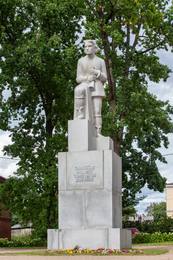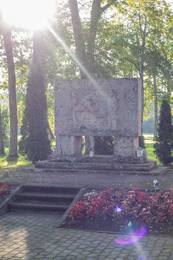Apie nacionalinį patriotą pirmąjį leitenantą Vilį Gelbį
Pulkininko leitenanto Vilio Gelbės (1890–1919) likimas atspindi sunkią situaciją kuriant mūsų valstybę ir kariuomenę, taip pat šių įvykių vertinimą.
1918 m. lapkričio 18 d. paskelbus Latvijos valstybę, prasidėjo Latvijos nepriklausomybės karas ir ginkluotųjų pajėgų kūrimo darbai. Pirmosiose Latvijos savanorių kareivių gretose buvo Kurše gimęs jūrų leitenantas Vilis Gelbė.
Iškart po Latvijos valstybės paskelbimo prasidėjo Raudonosios armijos puolimas, o laikinoji Karlo Ulmanio vyriausybė pasislėpė Liepojoje. 1919 m. vasarį, padedant Estijos armijai, prasidėjo Latvijos išlaisvinimas iš šiaurės, o Rūjienos apylinkėse įvyko pirmosios Tērbate formuojamų Latvijos kariuomenės mobilizacijos, kurios, vadovaujamos pulkininko Jorgio Zemitano, tapo Šiaurės Latvijos brigada. 1919 m. vasario 22 d. Valmieros apygardos komendanto pareigas turėjo eiti Vilis Gelbe. Jis buvo vienas iš tų, kurie praktiškai dirbo kurdami Šiaurės Latvijos brigadą, kuri, pagal susitarimą su Estija, buvo suformuota vadovaujant Estijos armijai.
Šiaurės Latvijos brigada kovojo ne tik su bolševikais, bet ir su landesveru bei Geležine divizija Cėsių mūšyje. Rūjienos apylinkėse mobilizuoti Šiaurės Latvijos kariai kovojo ir vėlesniuose Nepriklausomybės karo mūšiuose.
Paskutinis Valmieros apygardos vado pulkininko leitenanto V. Gelbės įsakymas buvo išleistas 1919 m. gegužės 6 d. Kokios buvo tikrosios jo priverstinio atsistatydinimo priežastys, dėl kurių jis turėjo atsistatydinti iš pareigų, nežinoma. Įrašuose nerasta nė vieno skundo ar papeikimo dėl jo veiksmų nei iš vietos gyventojų, nei iš jam pavaldžių karių, nei iš Latvijos viršininkų. Tai net neįtikėtina tokiomis sunkiomis sąlygomis, kuriomis jam teko dirbti ir būti tuo „pabaisa“, kuris vardan kilnios Latvijos nepriklausomybės ir laisvės idėjos buvo priverstas atimti iš valstiečių šeimų kone paskutinį maitintoją, paskutinį arklį ir duonos kąsnį. Tačiau savo energingais veiksmais, jautriu supratimu ir taktu, užuot galėjęs kelti neapykantą ir visuotinę panieką, jis pelnė šiaurės latvių, o vėliau ir visos Latvijos tautos pagarbą ir dėkingumą. Priežastis galėjo būti V. Gelbės kovo 27 d. pranešimas – protestas prieš Estijos kareivių ir karininkų vykdomą Latvijos sodybų plėšimą. Tai buvo drąsus, netgi įžūlus ir rizikingas žingsnis.
Tęsiantis Šiaurės Latvijos teritorijos išlaisvinimui, atsirado galimybė atlikti panašią tarnybą arčiau Limbažių ir Ķirbižių, kur gyveno V. Gelbės šeima. Paskutinis Vilio Gelbės veiklos etapas vyko Limbažių miesto ir rajono komendanto pareigose (paskirtas Janio Miglavo įsakymu 1919 m. birželio 2 d.), kurias jam teko atlikti daugiausia Cėsių mūšio metu, viename svarbiausių karo rajonų. Viską teko pradėti iš naujo. Pirmosios didesnės mobilizacijos Limbažose įvyko birželio 5, 6 ir 7 dienomis. Vyriausiasis leitenantas Gelbė taip pat turėjo rūpintis situacijos kontrole rajone iki Gaujos upės, kur buvo sutelktos priešo pajėgos.
Birželio 10 d. Cėsyje buvo pasirašytos paliaubos, kurios turėjo galioti iki birželio 20 d. Abi kariaujančios pusės šį laiką panaudojo savo pajėgoms papildyti.
J. Ozoliņa savo birželio 16 d. ataskaitoje apie leitenantą Gelbi rašo: „...kuris šiuo metu labai užsiėmęs naujos komendantūros apygardos organizavimu Vidrižuose. Naujoje Vidrižų apygardoje birželio 18, 19 ir 20 dienomis paskelbtos žmonių ir arklių mobilizacijos, kuriose (...) privalau dalyvauti ir aš.“
Paliaubos dar nebuvo pasibaigusios, tačiau viskas rodė, kad kovos netrukus prasidės. V. Gelbė, kaip ir dauguma latvių bei estų Šiaurės Latvijoje, nemanė, kad šie mūšiai prasidės taip greitai, ir pasitikėjo paliaubų sutartimi su vokiečiais, kuri buvo sudaryta tarpininkaujant sąjungininkams.
Puikiai suprasdamas ir suvokdamas artėjančių mūšių lemiamumą, jis joms ruošėsi su dideliu atsidavimu, negailėdamas nei savo, nei kitų. Jis įdėjo visas jėgas, net jei Limburgo žmonėms buvo sunku patikėti Latvijos žmonių laisvės galimybėmis. Ir jam pavyko.
Nelaukdami paliaubų pabaigos, birželio 19 d. Inčukalno apylinkėse dislokuotos vokiečių geležinkelio divizijos flango sargyba, vadovaujama kapitono Blankenburgo, pirmoji pradėjo žygį Limbažių link.
Birželio 19 d. Vilis Gelbė žuvo mūšyje su vokiečių Geležinės divizijos kariais netoli Vidrižių dvaro. Jo žiauriai sužalotas kūnas buvo rastas tik birželio 21 d.
Patekę į puolančių Landesvero ir sąjungininkų Estijos kariuomenės kryžminę ugnį, leitenantas Gelbė ir jo nedidelė kareivių grupė nesitraukė pas estus, bet drąsiai priėmė pirmuosius smūgius, kelioms valandoms sulaikydami vokiečių tolesnį puolimą Limbažių link. Estijos 9-ajam pėstininkų pulkui pavyko pasiruošti smūgiui, neleidus vokiečių pajėgoms užimti Limbažių miesto, jas nugalėjus ir pradėjus sėkmingai persekioti priešą. Taip jie sutrikdė visą vokiečių strateginį planą. Flango apsauga negalėjo susisiekti su pagrindinėmis savo pajėgomis, ir šie Limbažių – Lielstraupės – Cėsių – Raunos mūšiai, vykę 1919 m. birželio 19–23 d., įtikinamai užtikrino palankią visų Cėsių mūšių baigtį.
Atsižvelgiant į visus V. Gelbės nuopelnus įkuriant Šiaurės Latvijos brigadą ir apskritai į laisvės kovą, jam po mirties buvo įteiktas Lāčplėšio karo ordinas.
Įdomu tai, kad pirmosios iniciatyvos apdovanoti didvyriškiausius laisvės kovotojus kilo tiesiogiai iš V. Gelbės – tuo metu Valmieros apygardos komendanto Rūjienoje. Tai buvo dar 1919 m. balandžio mėn., kai jis savo ataskaitoje J. Zemitānui rekomendavo apdovanoti drąsiausius Rūjienos karius III laipsnio Imantos ordinu. „Pasiūlymas vertas dėmesio, tačiau tai nebuvo įmanoma, nes tokio ordino tuo metu nebuvo. Imantos ordino pavadinimas vėl pasirodė 1920 m. kovo 6 d., kai JALibertsas (vienas iš Karo ordino įstatų nustatymo komisijos narių) saugumo ministrui K. Ulmaniui pateiktame pranešime dėl Karo ordino nustatymo pasiūlė Imantos ordino pavadinimą su šūkiu „Geriau paskęsti savo kraujyje, negu žūti po svetimu jungu!“.
Tačiau būtent ankstesnių latvių kartų sukurta, Pumpurų ir Rainio branginama Lačplėsio legenda 1919 metų pabaigoje tapo realybe, o Lačplėsio karo ordinas buvo įsteigtas Nepriklausomybės kovų kulminacijoje – 1919 metų lapkričio 11 dieną.
1916 m. pavasarį Kronštato karininkas Gelbė sušuko:
„Užtenka nešti vergų grandines,
Tamsiose sienose gana tvanku!
Tačiau 1919-ųjų vasarą jo branginamos svajonės išlaisvinti tėvynę nuo visų engėjų iš vilties virto realybe. Jo svajonių išsipildymas buvo taip arti...
Užrašas ant Gelbės paminklo skelbia:
"Žmonės, kurie praeina pro mane, -
uždegtas meilės tėvynei!
Už mylimą tėvynę
"Prisiekiu savo gyvybę."
Šaltinis: Jānis Ulmis, „MEILĖ TĖVYNEI...“. Lačplėšio karo ordino kavalierius, jūrų leitenantas Vilis Gelbe, apie Šiaurės Latvijos ginkluotųjų pajėgų formavimąsi ir Cėsių mūšius Latvijos išsivadavimo kare, 2018 m., Leidėjas: Limbažių muziejus
Susijusi laiko juosta
Susijusios temos
Susijusios vietos
Paminklas karinio jūrų laivyno leitenantui L.k.o.k. Vilis Gelbes (1890-1919)
Įsikūręs Limbaži Jūros gatvės kapinėse, Jūros g. 56, Limbaži
Eksponuojamas paminklas, kurį 1922 m. rugsėjo 10 d. atidengė tuometinis Latvijos prezidentas Janis Čakste, su poeto Vilio Plūdonio dedikacija Viliui Gelbui:
„Mano žmonės, kurie eina pro mane, dega meile savo tėvynei,
"Dėl savo mylimos tėvynės pažadu savo gyvybę."
Vilis Gelbė (1890–1919) gimė Kurše, Zemytės valsčiuje, tačiau buvo glaudžiai susijęs ir su Limbažių puse, nes prasidėjus Latvijos nepriklausomybės karui, iš Sankt Peterburgo grįžo į Latviją ir įstojo į Šiaurės Latvijos brigadą.
1919 m. gegužę V. Gelbis vadovavo Limbažiuose, tapo srities karo komendantu ir sugebėjo įkvėpti vietos vyrus ir net labai jaunus berniukus stoti į kariuomenę.
Tuo metu V. Gelbės veikla Limbažiuose ir apylinkėse buvo labai reikšminga; jo pareigos apėmė ne tik tvarkos palaikymą mieste ir apylinkėse, bet ir mobilizaciją, kareivių ir arklių aprūpinimą maistu bei daugelio kitų klausimų, kurie negalėjo būti įtraukti į įsakymus ir instrukcijas, sprendimą. Jo organizuota komendanto komanda veikė kaip koordinuotas mechanizmas, suteikiantis Šiaurės Latvijos brigadai kuo efektyvesnę pagalbą. Komendanto komanda ypatingais atvejais eidavo į pagalbą reguliariajai armijai, o naujiesiems kariams rodydavo pavyzdį. V. Gelbė buvo pirmasis Latvijos armijos karininkas, pasiūlęs savo pavaldinius apdovanoti III laipsnio Imantos ordinu. Ordino tuo metu dar nebuvo. Imantos vardas viešumoje pasirodė tik 1920 m. kovo 20 d., kai saugumo ministrui Kārliui Ulmaniui buvo pateiktas siūlymas dėl karinio ordino įsteigimo. Tačiau ordinui buvo pasirinktas Lāčplēsio vardas.
Cėsių mūšio metu Vilis Gelbė žuvo 1919 m. birželio 19 d. žvalgybos misijos metu. Vėliau Gelbė buvo apdovanotas Lačplėšio karo ordinu, tačiau istorikai mano, kad jo indėlis nebuvo tinkamai įvertintas. Taip yra daugiausia dėl Gelbės narystės Šiaurės Latvijos brigadoje.
Vadinamoji Pietų Latvijos brigada, kuriai iš pradžių vadovavo Oskaras Kaplakas, o vėliau – Janis Baložas, varžėsi su Šiaurės Latvijos brigada, kuriai vadovavo Jorgis Zemitānsas.
Paminklas žuvusiems Latvijos išsivadavimo karo kariams atminti
Paminklas yra šalia Limbažių Šv. Jono liuteronų bažnyčios, Lībiešu g. 2. Čia pastatytas memorialas žuvusiems Limbažių ir apylinkių kariams bei generolui leitenantui Viliui Gelbei (1890–1919), žuvusiam 1919 m. birželio 19 d. Vidrižuose mūšyje su vokiečiais.
Generolo leitenanto Vilio Gelbės paminklą galima pamatyti Limbažių kapinėse, Jūras gatvėje.
Paminklas Vidrižuose, toje vietoje, kur žuvo LKOK Vilis Gelbe ir du jo komandos kariai.
Vidrižuose, ties posūkiu į Lėdurgą, Nepriklausomybės kovų metu, 1919 m. birželio 19 d., mūšyje žuvo jūrų leitenantas Vilis Gelbė ir du kareiviai.
Vilis Gelbė palaidotas Limbažų kapinėse. Už didvyrišką poelgį prie Vidrižių dvaro Vilis Gelbė buvo apdovanotas Lāčplėsio karo III laipsnio ordinu (Nr. 895).
Šiuo metu mūšio vietoje galima pamatyti tris Pemino kryžius, įrengtus 1989 m.
1934 m. birželio 22 d. prie dvaro parke augančio klevo buvo atidengta bronzinė atminimo lenta, sukurta menininko Stefano Berco vardu. Jau komunistinės okupacijos pradžioje, 1940 m. rudenį, atminimo lenta dingo. Klevas, prie kurio ji buvo prikalta, taip pat žuvo. Prasidėjus Atbudimui, 1989 m. birželio 19 d., minint Gelbės ir dviejų jo komandos karių – kapralo Krustinio ir eilinio Krūzės – žūties 70-ąsias metines, kryžkelėje, kur kadaise stovėjo atminimo lenta, Aplinkos apsaugos klubo ir Latvijos liaudies fronto Limbažių rajono skyrių iniciatyva buvo pastatyti trys mediniai kryžiai, pagaminti Janio Eglītio liaudišku stiliumi. Limbažių rajono vykdomojo komiteto sprendimu 1991 m. balandžio mėn. ši atminimo vieta buvo įtraukta į vietinės reikšmės istorinių paminklų sąrašą.
Paminklas „Talavos trimitininkas“
Įsikūręs Rūjienos centro aikštėje.
Trijų metrų aukščio senovės Latvijos gvardijos kareivio atvaizdas, išdrožtas iš pilko suomiško granito, vadinamas „Tālavo trimitininku“, pastatytas ant trijų metrų aukščio granito pjedestalo, tačiau bendras paminklo aukštis siekia 7,5 metro. Pradiniuose eskizuose ir modeliuose K. Zemdega į kario rankas įdėjo kardą, kuris vėliau buvo pakeistas trimitu. Paminklas buvo atidengtas 1937 m. rugpjūčio 15 d.
Šis paminklas atspindi sunkią mūsų valstybės ir kariuomenės kūrimosi situaciją, taip pat šių įvykių vertinimą. Iškart po Latvijos valstybės paskelbimo prasidėjo Raudonosios armijos puolimas, o laikinoji Karlo Ulmanio vyriausybė rado prieglobstį Liepojoje. 1919 m. vasarį, padedant Estijos armijai, prasidėjo Latvijos išlaisvinimas iš šiaurės, o Rūjienos apylinkėse įvyko pirmosios Tērbate besiformuojančių Latvijos kariuomenės mobilizacijos, kurios, vadovaujamos pulkininko Jorgio Zemitano, tapo Šiaurės Latvijos brigada. Šiaurės Latvijos brigada kovojo ne tik su bolševikais, bet ir su landesveru bei Geležine divizija Cėsių mūšiuose. Rūjienos apylinkėse mobilizuoti Šiaurės Latvijos kariai kovojo ir vėlesniuose Nepriklausomybės karo mūšiuose. Po karo pagrindiniai pergalės laurai atiteko generolui Jāniui Balodžiui ir jo vadovaujamai Pietų Latvijos brigadai, tačiau Šiaurės Latvijos brigada dažnai buvo pamirštama. Rūjienoje planuojamas Šiaurės Latvijos brigados paminklas taip pat užtruko ilgai, o 1937 m. atidengtas paminklas oficialiai buvo reklamuojamas kaip Rūjienos krašto išlaisvinimo ir žuvusių karių atminimo paminklas, nepaminint, kad visi Šiaurės Latvijos brigados pulkai savo ištakas turėjo Rūjienoje.
Paminklas yra ne tik populiari turistų lankoma vieta Latvijos ir Estijos turistams, tam tikru mastu tapusi atspirties tašku norint aplankyti keletą kitų Nepriklausomybės karo memorialinių vietų Rūjienoje, bet „Tālavas tauretājs“ yra ir sustojimo vieta įvairaus lygio Estijos ir Latvijos valstybės bei vietos valdžios pareigūnams.
Rūjienos išlaisvinimo ir žuvusių karių paminklas, geriau žinomas kaip „Tolamas tauretājs“ (Tolimas ragas), 1998 m. spalio 29 d. buvo įtrauktas į valstybės saugomų kultūros paminklų sąrašą kaip nacionalinės svarbos meno paminklas (paminklo apsaugos registracijos numeris 4522).
Šiaurės Latvijos išvaduotojų paminklas
Įsikūręs Plāčio centre, netoli Inčukalno–Valko greitkelio (A3). Šalia autobusų stotelės ir Straupes bendruomenės centro.
Matomas Teodoro Zaļkalnso sukurtas paminklas Šiaurės Latvijos išvaduotojams Cėsių mūšyje 1919 m.
Ant trijų pakopų pagrindo pastatyti du travertino stulpai, ant kurių remiasi travertino blokas. Jo priekyje bareljefe pavaizduotas arklys, pakinkytas prie plūgo, ir artojas, kuris dešinėje rankoje laiko vadžias, o kairėje – kardą. Paminklo gale iškaltas tekstas, kuris baigiasi poeto Eduardo Virzos eilutėmis:
Šiaurės Latvijos išvaduotojams
KOL ŠIAME LAUKE PASĖJAMAS VIENAS GRŪDAS
Būsite giriami ir gerbiami
Paminklas buvo atidengtas 1931 m. lapkričio 8 d. Atidaryme dalyvavo prezidentas Albertas Kviesis.




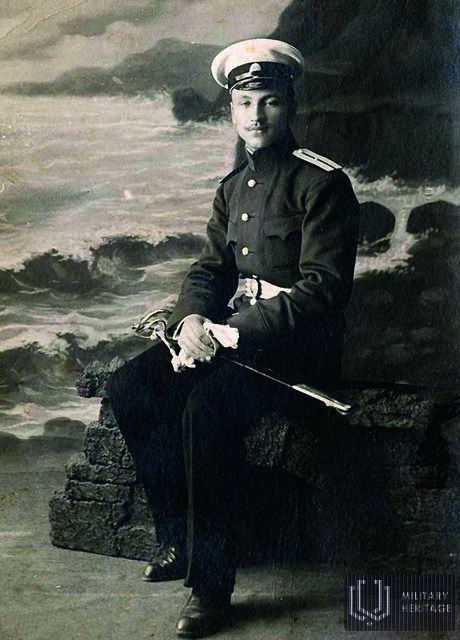
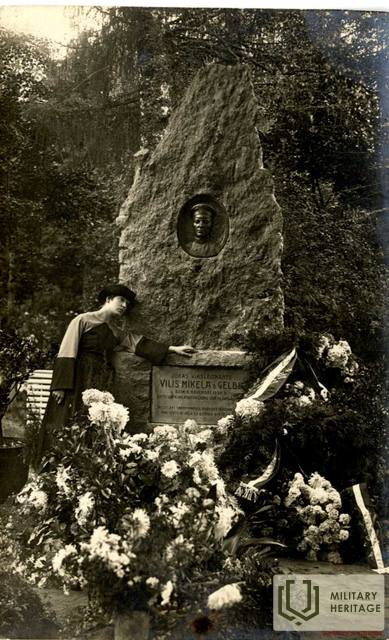
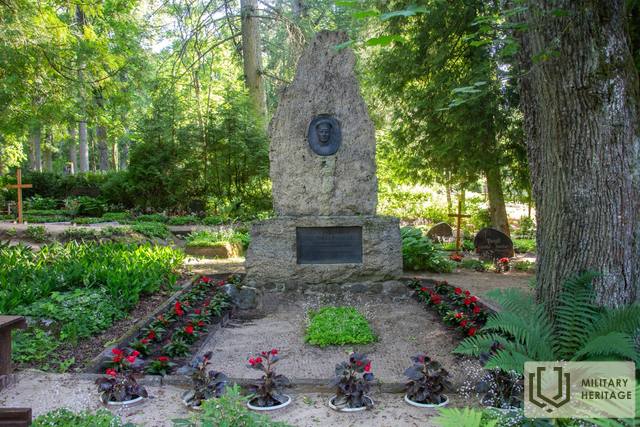
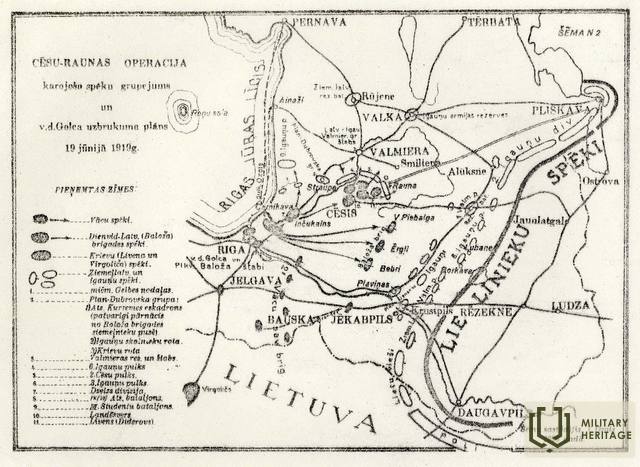
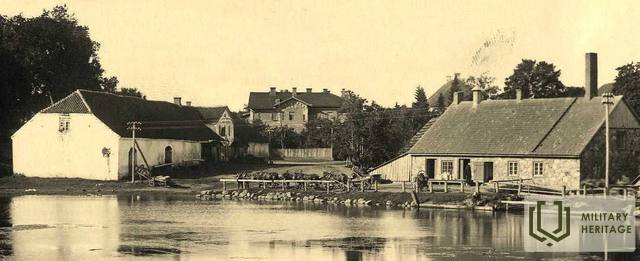
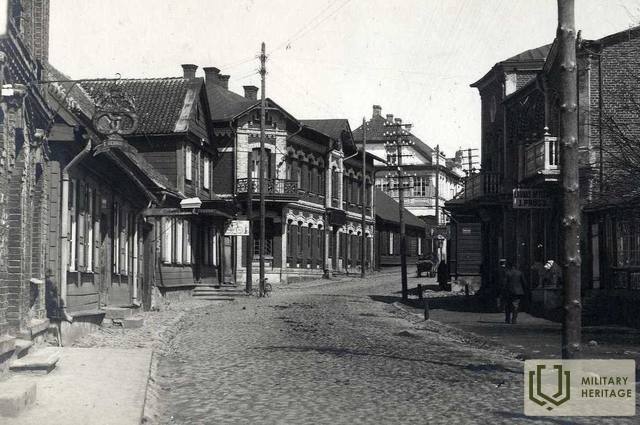
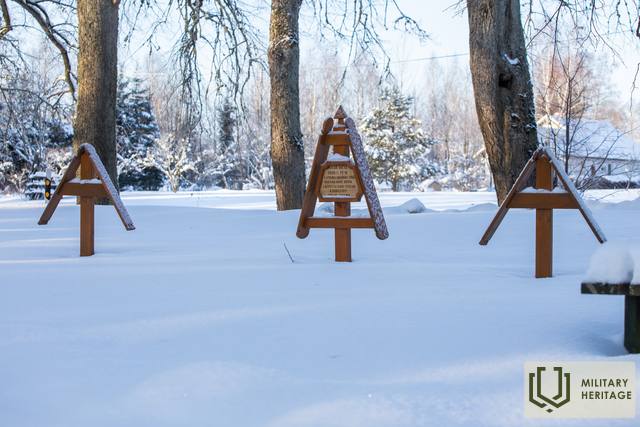

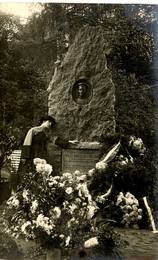
![Limbažiai. Prezidentas J. Čakste atidengia paminklą Limbažiuose žuvusiems Pirmajame pasauliniame kare. Latvijos Laisvės Kovos Paminklo atidengimas [1923]. Šaltinis: Latvijos nacionalinės bibliotekos skaitmeninė kolekcija „Dingusi Latvija“.](/g/Poi/00403/44213.png?size=260)

